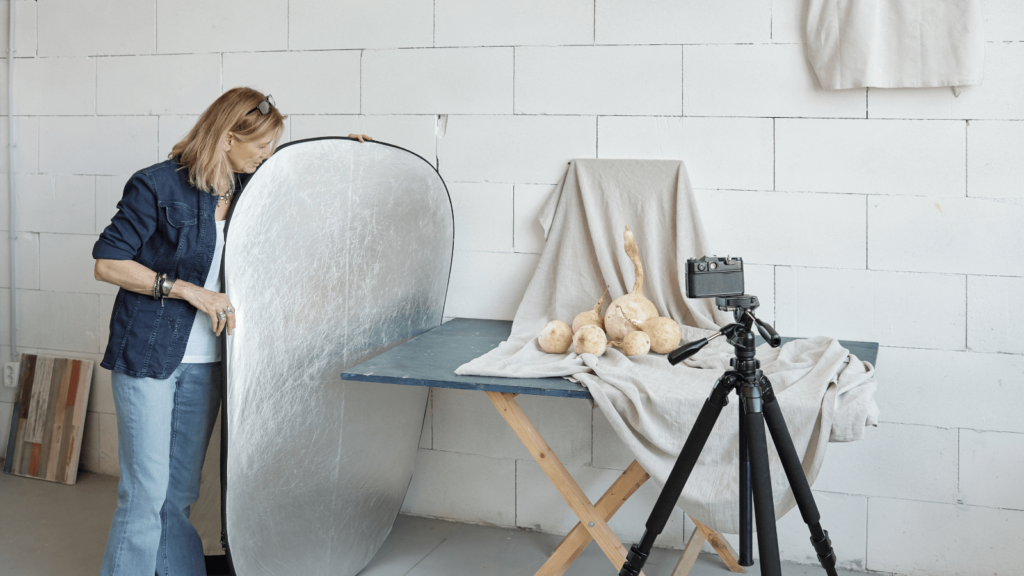A reflector might just be one of the most underrated tools in a photographer’s kit. Compact, affordable, and incredibly versatile, it can completely transform the look of your images.

Whether you’re shooting portraits, still life, or even nature scenes, using a reflector creatively can elevate your results without the need for expensive lighting gear. Here are some creative ways to use a reflector in your photography.
Fill in harsh shadows
One of the most common uses of a reflector is to bounce light back into shadowed areas of your subject. This is particularly helpful when shooting outdoors under harsh sunlight. By holding a reflector below your subject’s face, you can soften shadows under the eyes and chin, resulting in a more flattering and evenly lit portrait.
Create a catch light in the eyes
Adding a catch light – the sparkle of reflected light in a person’s eyes – can bring a portrait to life. By positioning a reflector in front of your subject, just below their eye line, you can bounce natural or artificial light into their eyes and make them appear more vibrant and engaging.
Use it as a key light
In situations where you have a strong light source, such as the sun or a window, a reflector can actually act as your main (or key) light. Simply bounce the light towards your subject and use the reflector as your primary source of illumination. This technique works especially well in backlit scenarios, where the sun is behind your subject, creating a dreamy, glowing rim light.
Shape and direct light
Some reflectors come with different surfaces: white for soft, neutral bounce; silver for bright and crisp highlights; gold for a warm tone; and black for absorbing light. By experimenting with different finishes, you can shape and colour the light to suit your creative vision. Try using the silver side for dramatic contrast, or the gold side to enhance sunset warmth.
Use it as a background
In a pinch, a large white or black reflector can double as a minimalist backdrop for portraits or product shots. It’s especially handy when you’re shooting on location and need a clean, controlled background for a close-up or flat lay.
Block or diffuse light
Reflectors aren’t just for bouncing light – you can also use them to block it. The black side of a 5-in-1 reflector is known as a flag and can be used to cut light and deepen shadows where needed. Some reflectors also include a translucent diffuser panel, which is perfect for softening harsh sunlight or flash.
Add drama to still life
In still life photography, subtle adjustments to lighting can make a huge difference. Use a reflector to add fill light from unexpected angles, enhance textures, or highlight specific areas of interest in your composition. Try placing a gold reflector off to one side to create a moody, cinematic effect.
Reflect colours creatively
Want to experiment a bit more? You can use coloured materials as makeshift reflectors – such as coloured paper or fabric – to cast a specific hue onto your subject. This technique can be great for adding atmosphere, mood, or a stylistic touch without the need for gels or post-processing.
Reflectors are lightweight, inexpensive, and endlessly adaptable – the kind of tool every photographer should keep close at hand. Whether you’re working with natural light or studio setups, these simple tricks can help you make the most of your reflector and get creative with how you control and shape light.



